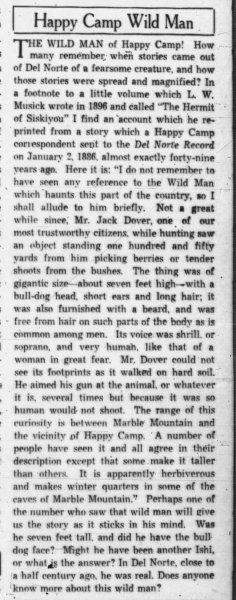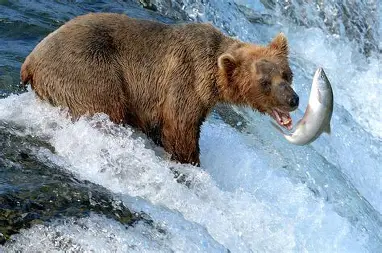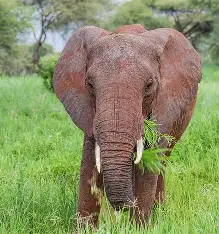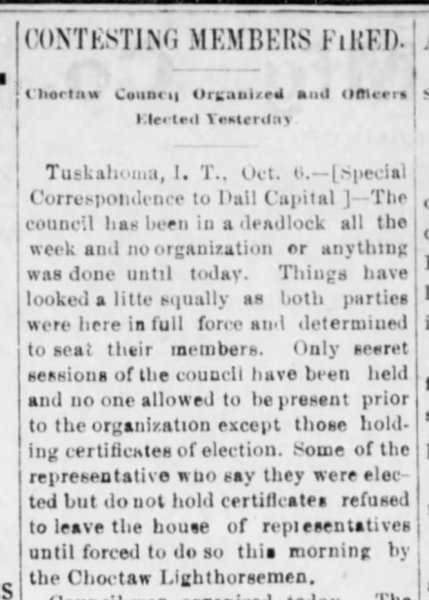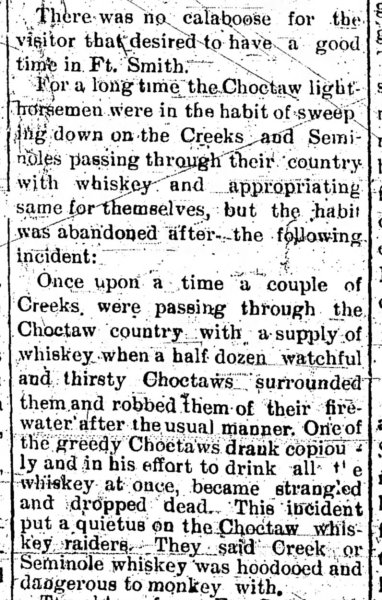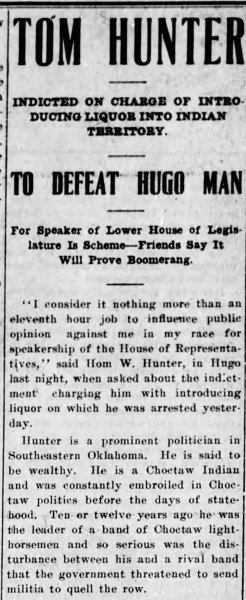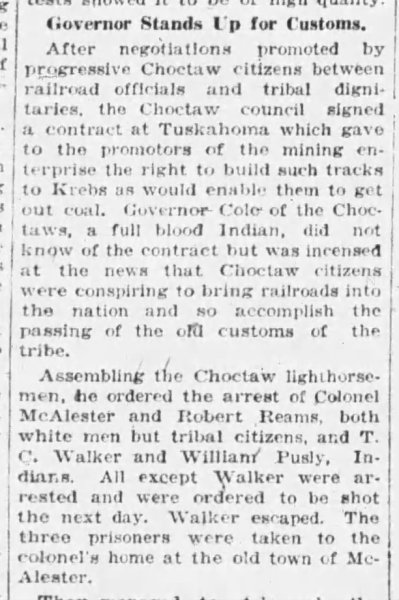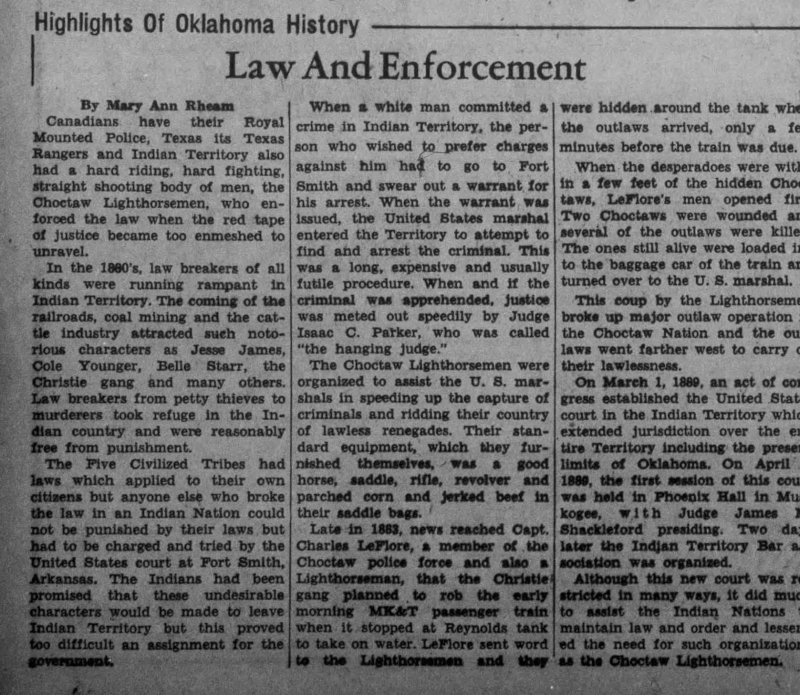All Activity
- Past hour
-
California 1886 - Hunter Has Wild Man in His Sights, Can't Shoot
Trogluddite posted a topic in More Historical Newspaper Archives
Published in the Oakland (CA) Tribune on January 05, 1936 and mentioned in the Forums at least once. However, the sighting is mistakenly dated to 1936 (the year of the newspaper article) when, in fact, it occurred in 1886. - Today
-

‘Bigfoot Took Her’ Review: When Sasquatch Was the Suspect - The Wall Street Journal
BFFbot posted a topic in News Articles
‘Bigfoot Took Her’ Review: When Sasquatch Was the Suspect The Wall Street JournalView the full article -

‘Bigfoot Took Her’ Review: When Sasquatch Was the Suspect - The Wall Street Journal
BFFbot posted a topic in News Articles
‘Bigfoot Took Her’ Review: When Sasquatch Was the Suspect The Wall Street JournalView the full article -

‘Bigfoot Took Her’ Review: When Sasquatch Was the Suspect - The Wall Street Journal
BFFbot posted a topic in News Articles
‘Bigfoot Took Her’ Review: When Sasquatch Was the Suspect The Wall Street JournalView the full article -

Trick-or-treaters search for candy and Bigfoot this Halloween - Monroe Evening News
BFFbot posted a topic in News Articles
Trick-or-treaters search for candy and Bigfoot this Halloween Monroe Evening NewsView the full article -
Not really. I talked about the need to "graze" based on the limited diet would increase the need for Bigfoot to expand its food search area as a practical matter. Any time where Bigfoots needs can't be met locally it would force bigfoot to be on the move until its needs can be met. We don't know the specifics of those needs. "Grazing" as a concept means the active searching or Movement for food esp. plant foods. This doesn't mean we are talking about cows eating grass out in the open field in Nebraska. It's conceptual. It's simply a matter of degree. If we want to say Bigfoot eats fish (and I imagine they do) I do have to wonder, why they are not spotted around salmon streams on a regular basis. Other than small numbers of bigfoot in existence, I can't think of any other major reason. There are plenty of food available for the taking. Stuff grows IN the Forrest for anyone who hasn't been made aware. Since most issues of Bigfoot are conceptual (since we don't have a body on a slab to study) BFF postings on the issues are meant to be conceptual. If what Bigfoot needs is close by, bigfoot is likely to stay close by. If not, Bigfoot would have to be on the move. If Bigfoot's has a very limited diet, Bigfoot has fewer options to fulfill that diet. If Bigfoots diet is more flexible it should be easier to meet it's food needs. It's well and good if there are berries and mushrooms available. This assumes Bigfoot would eat them and can eat them. If not, it's useless to the direct needs of bigfoot.
-
^Good example, and yes lots of reports from pickers of all kinds. BTW, there's plenty to learn about behaviors from select podcasts. I recently listened to an interesting report from a mushroom picker who was picking to make money, and had hired a whole crew to help. They got an aggressive confrontation in which the man's dog tried to attack and was killed by the big guy. I got the impression that the people had really messed up by overharvesting. That one starts about 50:00 in the first video. The second one I haven't entirely listened to but the title is on-topic.
-
You talked about Bigfoot needing to leave cover and be out in the open to forage. That’s a false assumption. I have picked huckleberries under a lodgepole pine canopy in Ferry county. Stuff grows IN the forest. That’s my statement. And yes? There are plenty of reports of berry pickers encountering Bigfoot. And yes there is a seasonality to it. https://www.bfro.net/GDB/show_report.asp?id=20802
-
They do. Just not as often as we'd like. This is partially because there are very few sasquatches and the sasquatches have taken up nocturnal or other behaviors to minimize contact. For example, bear encounters in berry patches occur in Alaska, but not nearly as often as they could, considering there are @ 140K bears, less than 1 million people, and an area over twice the size of Texas involved..............as well as the fact that people don't pick berries for a good 16 hours of the day.
-
Shouldn't these human mushroom pickers encounter Bigfoot doing the same thing? That's my point. My issue isn't Bigfoot failing to eat these things. If Bigfoot was exclusively limited in the diet, shouldn't we expect the see Bigfoot out there hunting seasonal berries or mushrooms right along with the people as a regular occurrence? Here in Iowa (and I don't pretend to know the PNW) mushrooming is done every late spring. It's seasonal. If we happen ot have Bigfoot here AND if Bigfoot has a diet high in these mushrooms due to its limited diet, we should have common bigfoot sightings during this time? I am thinking Bigfoot diet is a diverse diet based on whatever happens to be around him. Bigfoot is a big engine to feed.
-
I remember the story! Cliff has them on his website. https://cliffbarackman.com/home/projects/footprint-database/database-contents/2005-priest-river-id/ I still say a snow bike has the potential to follow a snow trackway to its conclusion. And if we don’t want to kill it? Then a crossbow with a biopsy dart is the next best thing.
-
Berries and mushrooms grow in the forest. Think about human mushroom and berry pickers heading up into the mountains to harvest them and encounter Bears doing the same thing. It’s not a higher risk for Bigfoot either.
-
Texas 1854 - First Jack County Residents Find Wild Man
Trogluddite posted a topic in More Historical Newspaper Archives
-
We've had a fair amount of rain, especially the horrible flooding in July.....not used to finding so many interesting prints, still have a bunch to post from the last several months, the last one is an oldie in Limestone. Some of the pics have multiple prints & sizes.
-
If bigfoot constantly has to search for berries and mushrooms, Bigfoot will have to be doing more grazing constantly searching for food. More grazing means more exposure out in the open. This should mean higher risk of being seen. My guess is Bigfoot eats meat in the form of what it can find. Whatever living thing one can find in a creek bed is on Bigfoot's menu. Eating meat means filling up Bigfoot sooner with less effort. This matches the idea we don't see heards of Bigfeet running around looking for food all day. There are a lot of large animals who are herbivores. They tend to be grazing all the time. This does show though Big animals can find food and fill their needs only on fruits and veggies and plants. I just think it makes more sense Bigfoot being a mixed diet animal who benefits from eating all of it. Here is what that plant-eating Elephant does for food: "They normally graze between 15 – 20 hours per day, which is why large spaces are essential for allowing elephants to eat for the amount of time and get the amount of nutrition they would in the wild. They can ingest approximately 150kg (330lbs) of natural browse in a day." Looks at a typical salad some 200lbs adult male might eat for dinner (hopefully one that will fill them up) "A large salad can contain a wide range of calories depending on its ingredients: 200 to 700 calories for a simple garden salad to richer varieties like Caesar or Cobb salads. Some estimates suggest it can range from 370 to 850 calories based on specific ingredients and their quantities. "
-

Something Strange In 3I/Atlas Image Has Us Asking Questions #3iatlas #podcast
BFFbot posted a topic in Wild & Weird Radio
Something Strange In 3I/Atlas Image Has Us Asking Questions #3iatlas #podcastView the full article -
Canada 1936 - Farmer Brown's Boy - Tirademan!
Trogluddite posted a topic in More Historical Newspaper Archives
Published in the Saint John, New Brunswick Telegraph-Journal on April 22, 1936. It sounds like an interesting story, but as Tirademan pointed out, it is clearly a work of fiction meant for kids. -
My view is there are not many of these things out there ( less in your area, maybe 3 from border to Newport ) and I am convinced they come down right to a place they find " tolerable " and skirt along river corridors just above normal human access or use. The cycle they likely follow in the colder climates must be large and in thick timber so the ice plate deposits from melt and refreezing cover a lot of their recognizable prints and destroy details that give it away. I believe Grassman58 on youtube has found a few suggestive trackways over the years. Being close to edge habitat for deer, elk and remote valleys with running waterways would be priority. My only guess would be they reduce activity massively, perhaps have some caches and operate at on deficit until snow breaks up. I would not be surprised to find out one day they can reduce their metabolic rate in the colder months, some form of torpor but not true hibernation. I have heard some far north native tribes are reported to have this ability to a degree. I could see them taking advantage of shafts and shallow cave systems but I want to know why we don't find preserved tracks in the cave floor if that is the case. There are a variety of snow trackways from nearby your area and they tend to occur around periods of bad weather, one I remember was about a guy found a set of prints that crossed his property near the Priest River area and they led up hill to a mangled deer completely disemboweled and meat pulled from the body, he noted bloody butt marks, hand prints and knee prints in the snow around the carcass. This was back around 2008 or something, the tracks went up hill into timber through some nasty thick regrowth and the guys could not follow as the snow was bucketing down and night was falling. I met the guy and heard his story first hand at the Klondike Tavern in Laclede, WA just before he moved to Alaska ( Thorn Bay ). I heard a similar story about someone finding snow prints up Dry Canyon Rd in 2014, tracks crossed the road and went up hill toward the north to south ledge above the river, I tried to get in touch with the witness but he was native and did not want people to think he was crazy so he would not get in touch with me. I also got a report of a snow trackway behind Freeman Lake in February of 2017, guys brother told me a little about it but said that he would not talk to anyone as he was a totally recluse. The other factor is that people out in these more harsh environments and remote properties are generally tight lipped and don't like to share. They know stuff and you don't and they want to keep it that way. To just touch on the coast for a second, I have loads of data here that seems to indicate they are still moving through their core habitats and visit throughout the year, as noted in another thread. They seem to drop below the holding snowline and hang out in wet thick crap on the edge of big timbered slopes that border a variety of habitat types and resources, they then cycle through a kind of loop along preferred paths over the course of a couple weeks and return to the starting point. Outside of the coastal states, your guess is as good as mine honestly but we still get the occasional snow trackway in the dead of winter so my question would be, how is it happening if they go coastal? This where I am with the question and that is what I have come across in my 4 years investigating the Selkirk area and it did not add up to much. I 100% agree, if you can solve the winter strategy in snow holding areas then you can really move the ball forward.
-
What happens when a retired battalion fire chief is driving through northern Idaho—and sees something in the river no man can explain? In this gripping episode of Bigfoot Society, we hear from Todd, a seasoned professional trained to write courtroom-level reports, who shares a firsthand sighting from I-90 near Kellogg, Idaho. A massive, dark figure walked effortlessly through the South Fork of the Coeur d'Alene River... and it wasn’t alone. We also dive into chilling stories from East Texas, Pennsylvania, Utah, and North Carolina—where a Sasquatch carried a deer over its shoulder, mimicked elk calls, and even withstood a 60 mph vehicle strike. You’ll hear from truckers, hunters, campers, and witnesses who know what they saw—and have nothing left to prove. This episode isn’t about blurry photos. It’s about truth. Had a Bigfoot encounter or strange experience? Send it to bigfootsociety@gmail.com – your story might be featured on the show! 🎥 Watch & Subscribe on YouTube 🔴 Subscribe here → Bigfoot Society YouTube 💬 Leave a comment & let us know your thoughts! 📞 Leave a voicemail with your story → Speakpipe (Use multiple voicemails if needed) 👥 Share this episode → Watch & Share 🎧 More episodes → Podcast Playlist 🌲 Recommended: New Jersey Bigfoot Encounters 💥 Support the Show & Get Perks ✅ Join the community on Supercast – Become a Member ✅ Listen ad-free & early on YouTube – Join Here 📱 Let’s Connect Instagram: @bigfootsocietyTwitter: @bigfoot_societyTikTok: @bigfoot.society🧰 Tools & Partners I Use (Affiliate Links) These help support the show at no extra cost to you: Beam (Better Sleep): Try BeamWildgrain (Better Bread): Join HereSeed (Probiotics): Get SeedMedi-Share (Healthcare): Learn MoreLMNT (Electrolytes) Free Sample Pack with your first purchase! : Get LMNTOrganic and non-GMO groceries delivered for less http://thrv.me/uarEhS🎙️ Podcasting Tools: Repurpose.io: Try ItDescript: Sign UpStreamyard: Start RecordingRiverside.fm: Try Riverside🎧 My Audio Interface: View on Amazon ☕ Buy Me a Coffee – Support Here 🛍️ Grab Some Merch – Shop on Etsy 📬 Mailing Address: Bigfoot Society 125 E 1st St. #233 Earlham, IA 50072 Listen to the Podcast
-
My only issue that I have been struggling with for years is what happens in winter? 7.5 lbs of animal fat and protein means your hunting. In winter? Hunting means tracks. Lots of tracks. And ungulates move down the mountain closer to human habitation. And 3 lbs of fruit, nuts or leaves would have to be stockpiled for winter. Which also means that during the summer months they would need to double their forage rate. We can say they all migrate to the coastal forests where winter is sparse. But that would definitely compress the population into a much smaller area. Which would make them much easier to find? If they just hunker into a cave or mineshafts in winter and go semi dormant then these lairs should be easy to locate? As most of them are mapped. Maybe depending on the region? Survival tactics vary? At least in the Pacific NW? I say if you unlock the mystery of winter with this species? Then that will be the final hurdle to discovery.
- Yesterday
-
Yeah, that is why the herbivore and even a plant dominant omnivore modeling is a tough pill to swallow for Sasquatch. I am of the mind that protein and fat are dominant in the diet. That would alleviate many of the problems regarding area devastation and energy expenditure. 1 pound of animal fat/ plant fat is around 3500. 1 pound of animal protein ranges from 500 to 900. 1 pound of huckle berries is about 170. If a Sasquatch wanted to eat well I think it would be fair to suggest that if they managed 2.5 pounds of fat, 5 pounds of protein and 3 pounds of fruit/leaves they would likely be in a surplus. That would indicate that you could meet the needs of one individual with just over 10 pounds of mass.
-
Did Bigfoots Battle with Indian Tribes?
Trogluddite replied to georgerm's topic in General Bigfoot Discussion
Just to continue the prior (as I didn't know how long it would be), there were no mentions of "Sacred Baby Mountain" in newspapers.com. Nor are there any when doing a general web search apart from those tied to websites reporting this specific story. Searching for "Captain Joshua LeFlore" draws a blank in newspapers.com; omitting his supposed rank brings up mostly wedding announcements, obituaries, a sale of land, and a murder case in Atoka, Oklahoma where a Joshua LeFlore pled guilty to manslaughter in 1899. The so-called professor is an author who has a bunch of sensationalist books listed on Amazon, etc., but most of them appear to be out of print. I will say that the Choctaw Lighthorsemen sound like an interesting bunch, breaking up political impasses (by forcing one side out of the assembly hall) in 1897 and enforcing bans on alcohol in their territory (after a sort) in 1902. One of their early leaders was indicted for introducing liquor into the Indian Territory (that's a legal term that is still used in court cases today) in 1914 and arresting some businessmen who circumvented the law to get a railroad run through the reservation in 1920. -
Did Bigfoots Battle with Indian Tribes?
Trogluddite replied to georgerm's topic in General Bigfoot Discussion
Everything old is new again. The Sacred Baby Mountain "legend" was discussed in 2011 and Forum member JDL noted that "It seems to me that further investigation would require discussion with Dr. Tuklo Nashoba, the author of the account, to determine his sources, and some digging into territorial and tribal records from the period. Dr. Nashoba titled the story as a Legend, and authorized its use by the TBRI, stating that the "ITS-BIG" site containing the Legend "was mostly for fun". Dr. Nashoba's site no longer appears to exist." (Emphasis mine.) JDL's comment is on page 5 of a thread on violent Bigfoot, here... According to a 1949 history in a local newspaper, the Choctaw Lighthorsemen weren't organized until the 1880s and while I'm no horseman, it doesn't look like those are draft horses (or 7-foot tall Indians). UPDATE: Well, the photo caption states that the Chocktaw lighthorsemen were organized in 1824. So that does fit with the narrative. Still looks like average adult humans on skinny horses, though. From the Enid (OK) Morning News on December 11, 1949. From the Atoka County Times (Atoka, OK) on July 02, 2003. -
Just interesting basic food for thought: "How much does a gorilla eat a day? A gorilla’s daily diet is quite substantial, with adults consuming around 40-50 pounds (18-23 kilograms) of food per day. In the wild, a gorilla’s diet typically consists of leaves, shoots, and fruits, with some species eating more fibrous foods like bamboo. " Easy if it's on a plate. However, I have to think it takes further energy or calories just to round up the 50 pounds of food. That scrounging for food has to expend some calories and thus additional need to add to that potion to meet its non sedentary needs.
-
 Something Strange About The Latest 3i Atlas Image Makes Us Do A Double Take- How Can This Be?View the full article
Something Strange About The Latest 3i Atlas Image Makes Us Do A Double Take- How Can This Be?View the full article

